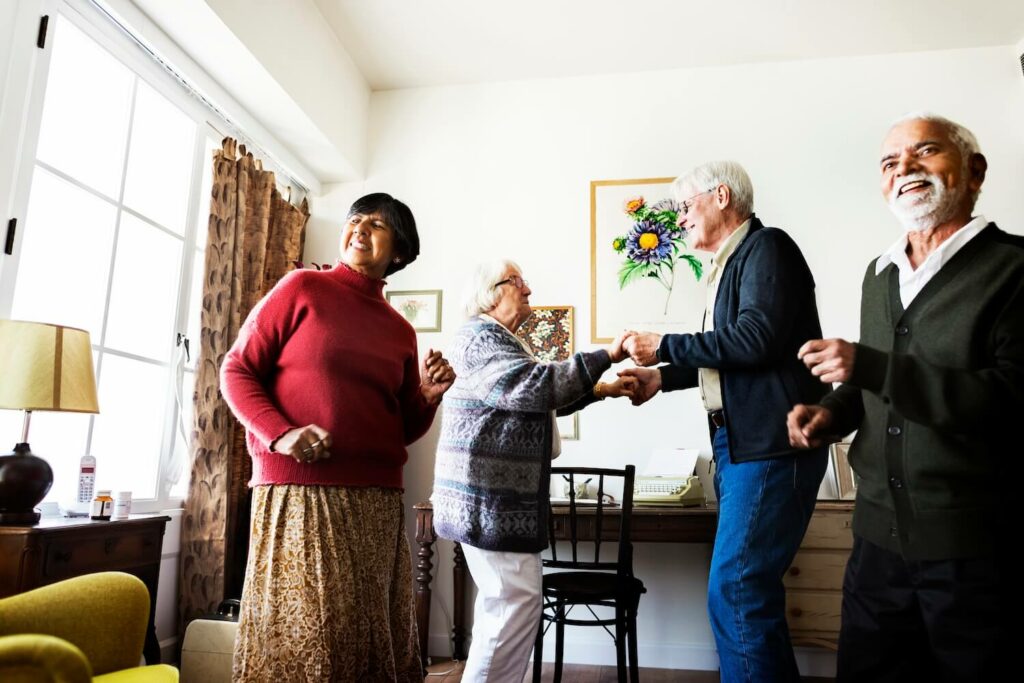
Assisted living facilities have long been associated with stereotypes of sedentary lifestyles, loneliness, and dependence. However, these perceptions often fail to capture the vibrant and active lives led by many residents in these communities. In reality, assisted living offers a supportive environment that fosters independence, social engagement, and a variety of activities tailored to residents’ interests and abilities.
This article aims to debunk common stereotypes surrounding assisted living by highlighting the active and fulfilling lives that residents lead.
Breaking the Older Stereotypes
Contrary to popular belief, life in assisted living communities is far from dull or monotonous. In fact, these facilities are designed to promote active and enriching lifestyles for older adults. From physical activities to cultural events and educational programs, residents have a plethora of opportunities to stay engaged and lead fulfilling lives.
Physical Activities
Many assisted living communities offer a range of physical activities designed to promote health and well-being. These may include exercise classes, yoga sessions, swimming, walking clubs, and even gardening activities. Regular physical activity not only improves physical health but also enhances mood and cognitive function, contributing to a higher quality of life for residents.
Social Engagement
One of the most significant benefits of assisted living is the opportunity for social interaction and connection. Residents often form close bonds with their peers, participating in group activities, outings, and events. Whether it’s playing card games, attending movie nights, or joining a book club, there’s always something happening to keep residents socially engaged and connected to their community.
Intellectual Stimulation
Assisted living communities recognize the importance of intellectual stimulation in maintaining cognitive function and overall well-being. Many facilities offer educational programs, lectures, and workshops on a variety of topics, ranging from art and history to technology and current events. Residents have the opportunity to continue learning and exploring new interests, fostering a sense of purpose and accomplishment.
Cultural and Recreational Activities
Assisted living communities often organize cultural outings, recreational excursions, and entertainment events to enrich residents’ lives. Whether it’s attending concerts, visiting museums, or taking scenic drives, residents have the chance to explore their interests and enjoy new experiences. These activities not only provide enjoyment but also promote a sense of adventure and exploration, keeping life exciting and fulfilling.
Active Volunteer Opportunities
Many assisted living communities offer opportunities for residents to engage in volunteer work and give back to the community. Whether it’s participating in local charity events, volunteering at schools or hospitals, or assisting with community projects, residents can make meaningful contributions and feel a sense of purpose and fulfillment. Volunteering also fosters a sense of connection to the broader community, enhancing residents’ overall well-being.
Personalized Care and Support
While assisted living communities offer a wide range of activities and amenities, they also provide personalized care and support tailored to each resident’s needs and preferences. Trained staff members are available around the clock to assist with daily tasks, medication management, and healthcare needs, allowing residents to maintain their independence while receiving the support they require. This individualized approach ensures that residents can live life on their terms, pursuing activities that bring them joy and fulfillment.
Additional Strategies for Leading Active Lives in Assisted Living Communities
In addition to the activities and programs offered within assisted living communities, there are several strategies residents can adopt to lead even more active and fulfilling lives:
- Embrace Technology: Technology can be a valuable tool for staying connected and engaged, especially for residents who may have limited mobility or difficulty attending in-person activities. Many assisted living communities offer technology classes and support to help residents learn how to use smartphones, tablets, and computers to communicate with loved ones, access online resources, and participate in virtual events and activities.
- Pursue Personal Interests: Assisted living communities often encourage residents to pursue their passions and interests. Whether it’s painting, photography, writing, or playing musical instruments, residents can explore their creative talents and hobbies through workshops, classes, and group activities. By engaging in activities they love, residents can experience a sense of fulfillment and purpose.
- Maintain Relationships: Building and maintaining relationships with family and friends is essential for emotional well-being and social connection. Assisted living communities often facilitate visits from loved ones and provide spaces for residents to spend quality time together. Residents can also use technology to stay in touch with distant family members through video calls, emails, and social media.
- Stay Active in the Community: Assisted living residents can stay connected to the broader community by participating in local events, volunteering, and attending religious services or community gatherings. Many communities offer transportation services to help residents access off-site activities and events, allowing them to remain engaged and involved in the world beyond their residence.
- Practice Self-Care: Taking care of oneself is crucial for overall health and well-being. Assisted living residents can prioritize self-care by participating in relaxation techniques such as meditation, tai chi, or massage therapy. Additionally, maintaining a healthy diet, getting regular exercise, and getting enough sleep can contribute to physical and mental wellness.
Assisted Living Facilities Conclusion
Assisted living residents lead active and fulfilling lives, challenging stereotypes of aging and dependence. Through a combination of physical activities, social engagement, intellectual stimulation, and personalized care, residents can thrive in a supportive environment that fosters independence and well-being. By debunking stereotypes and highlighting the diverse experiences found within assisted living communities, we can promote a more positive and inclusive view of aging. Ultimately, assisted living offers older adults the opportunity to live life to the fullest, embracing new adventures, pursuing personal interests, and forging meaningful connections with others.

